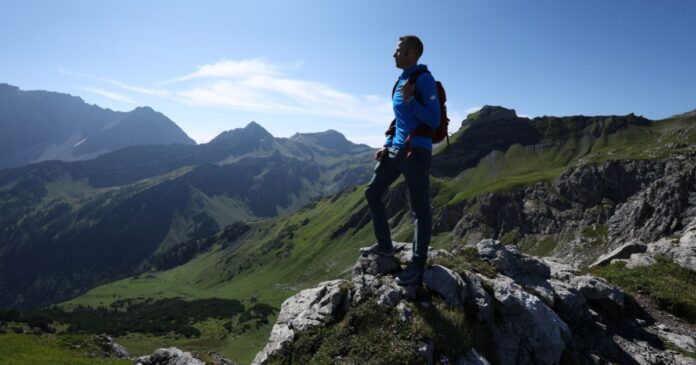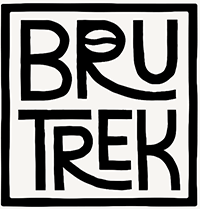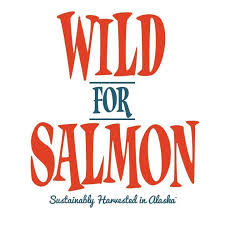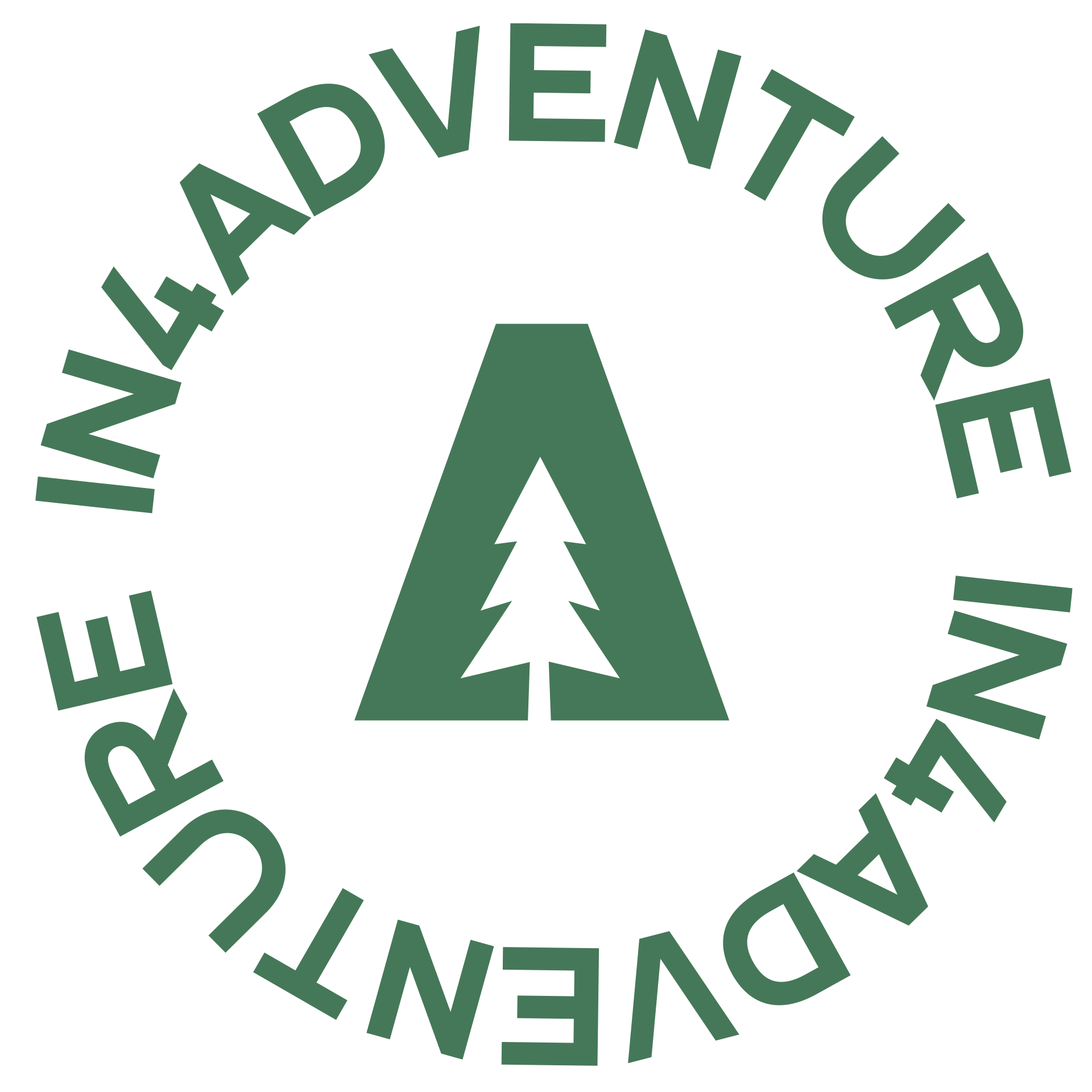Liechtenstein is a small but mighty country rich in history that dates back centuries.
It’s like a cork right in the middle of Switzerland, Austria, Germany to the North and Italy to the South. I started my adventure in the town of Vaduz. The town was a nice combination of cosmopolitan architecture and abstract art. Situated right along the Rhein riverwith a backdrop of gorgeous mountains and ancient castles. Through a few days of meeting local guides, I learned that Liechtenstein has a rich food culture. It is similar to its neighbors, but a distinct and proud history.
Fresh Cup of Coffee
A great way to start any trip is with a fresh cup of coffee. I definitely needed it after the long flight. Liechtenstein isn’t known the world over for its coffee culture. However, Peter Demmel at Demmel Coffee welcomed me for a sampling of his small batch, fresh roasted beans. He was a fantastic personality with a lot of energy and passion for roasting the perfect cup of coffee. I was able to taste multiple espresso drinks as well as experience his homemade micro-batch barrel roaster! This was a one-of-a-kind contraption to really understand the art and nuance of coffee roasting.
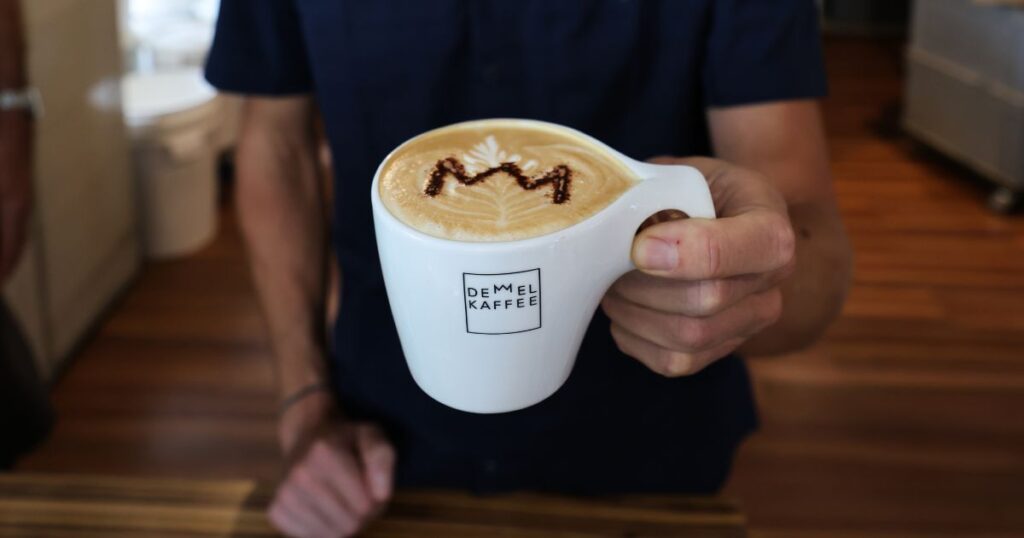
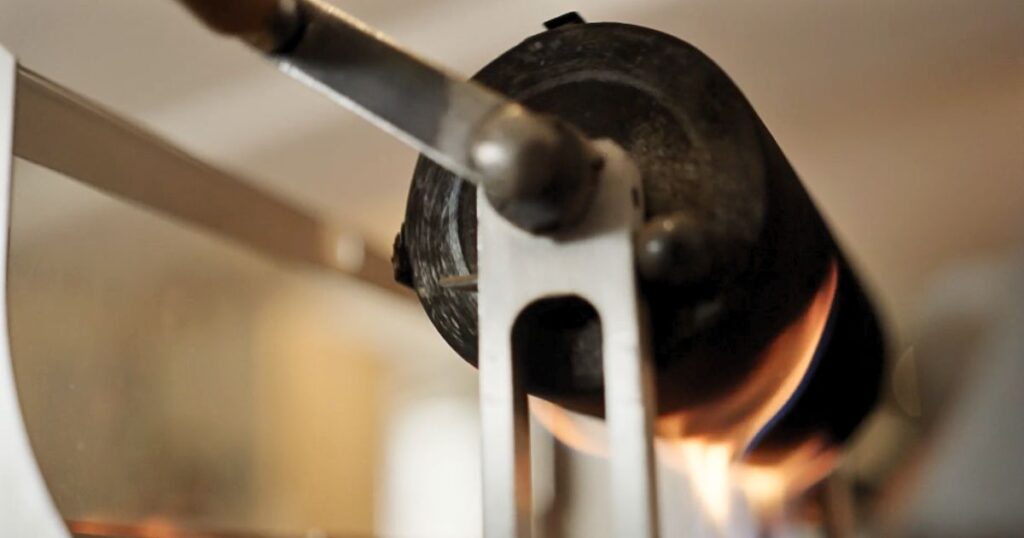
Local Farm Stand
Full of energy, I next met up with Roman Eggenberger, a member the Verien Feldfruende. It's a local community group that is bringing knowledge of Liechtensteinian products to the world. They also connecting local farms to local consumers. One of things that I love to do when I travel, is search for and taste local ingredients that I can’t get back home.
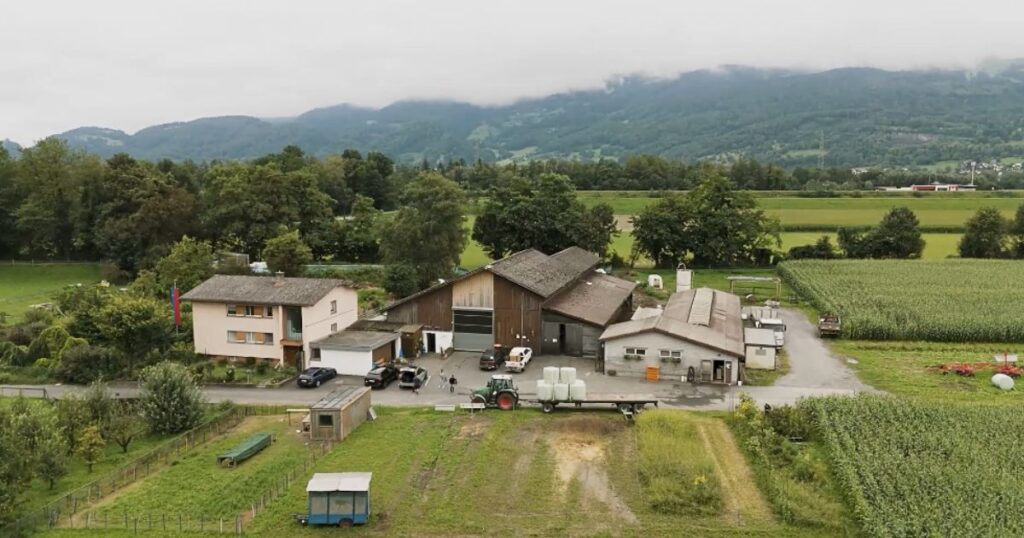
We had a quick shopping trip at a local farm stand with an eye on cooking up lunch.
I didn’t have a specific recipe in mind when I entered. But, I was quickly inspired to make a local version of Panzanella, an Italian bread salad. We purchased fresh baked pretzels, Landjaengers (cured meat sticks), some local cheeses and a few vegetables.
Roman told me that we were going to be cooking lunch in an old castle. That got me even more excited beyond the new food products we had just procured. Roman and I set up our pop-up lunch spot in the ruins of an old castle just outside of town. I never knew I wanted to cook in a castle but when he suggested it, I was all in.
Panzenella
Panzanella is a great no cook-no burner recipe that can be completely customized to your ingredients and flavor preferences. All you need to do is rip up your bread, chop your meats, cheeses and vegetables, toss it with some seasonings and oil and vinegar.
Then let it sit for 20-30 minutes and you have a fantastic meal! This Liechtenstein version was a treat. A combination of Germany, French and Italian flavors with a wonderful finish of tart, herbaceous Liechtenstein cheese. Food can provide a platform to really connect us to an area and this recipe really did that for us. It was great to experience some of the local flavors with a welcoming guide in a special spot.
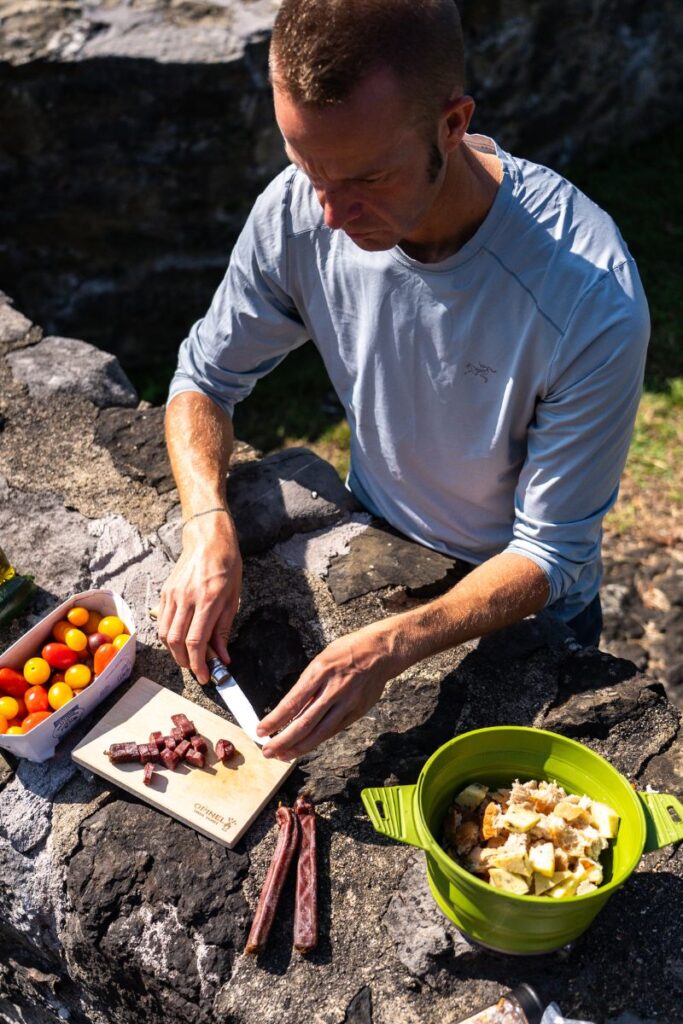
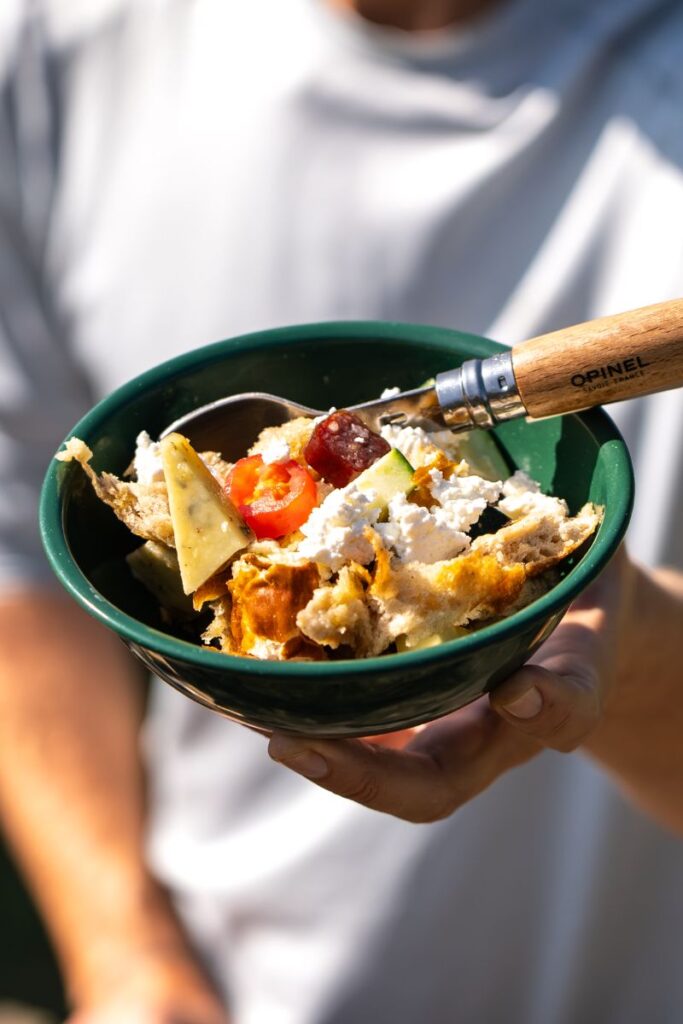
Ribel
One of the quintessential dishes of Liechtenstein is Ribel. It’s a very simple dish with only a few ingredients. Dry, coarse-ground corn, butter, water and salt. This was a dish that fueled the population during hard economic times centuries ago. But, it still has a place on the table today.
Ribel is very similar to polenta in Italy, grits in the Southern United States or masa in Mexico. The difference for ribel is that it's cooked to a relatively dry consistency rather than soft and creamy in other regions.
We met up at a local restaurant, Salz & Pfeffer, where Chef Reto Janal cooked up a pot for us to try. It’s coarse on the bite, but finishes with a nutty, toasted corn flavor. Each family has their own preparation but many additions are milk, butter, cream, jam, honey, local cheeses and even a drip of coffee! All of these took a simple, straightforward flavor to a complex bowl that was quite tasty.
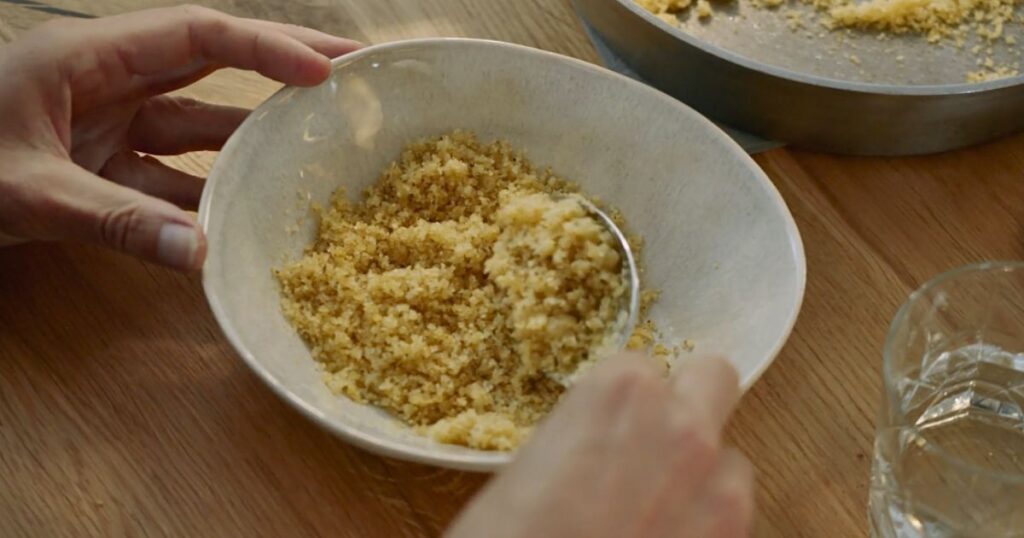
Foraging with an Expert
I’m a chef that loves cooking outdoors but I don’t do much foraging. Mainly because I’m not an expert and I want to make sure that what I’m eating won’t get me sick.
I met up with a local foraging expert Nadja Beck-Nigg of Triesenberg to forage for local herbs on the hillside. She has been living in this area for all of her life and hiking these mountains many times. So I was in good hands.

We set out on a misty morning and just along the hiking path were many varieties of green herbs. Clover, nettle and many with names that I can’t pronounce. All had similar flavors to parsley, asparagus, or chervil but with their own unique flavors to this area. She had set up a wonderful spot to cook up a quick trail lunch.
Pasta Dish with Snake Bread
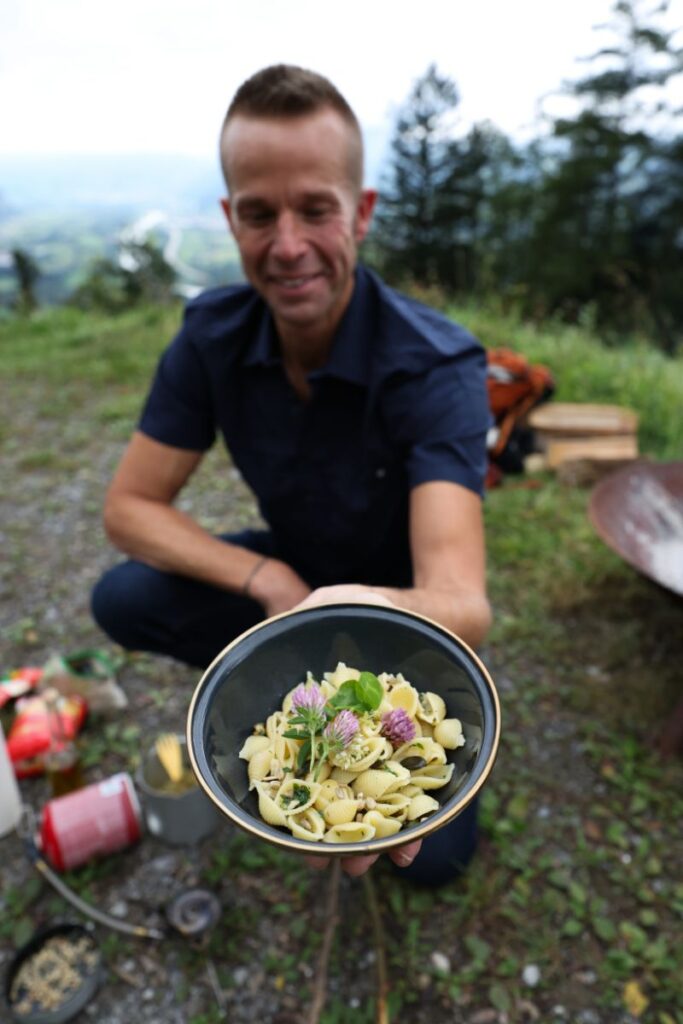
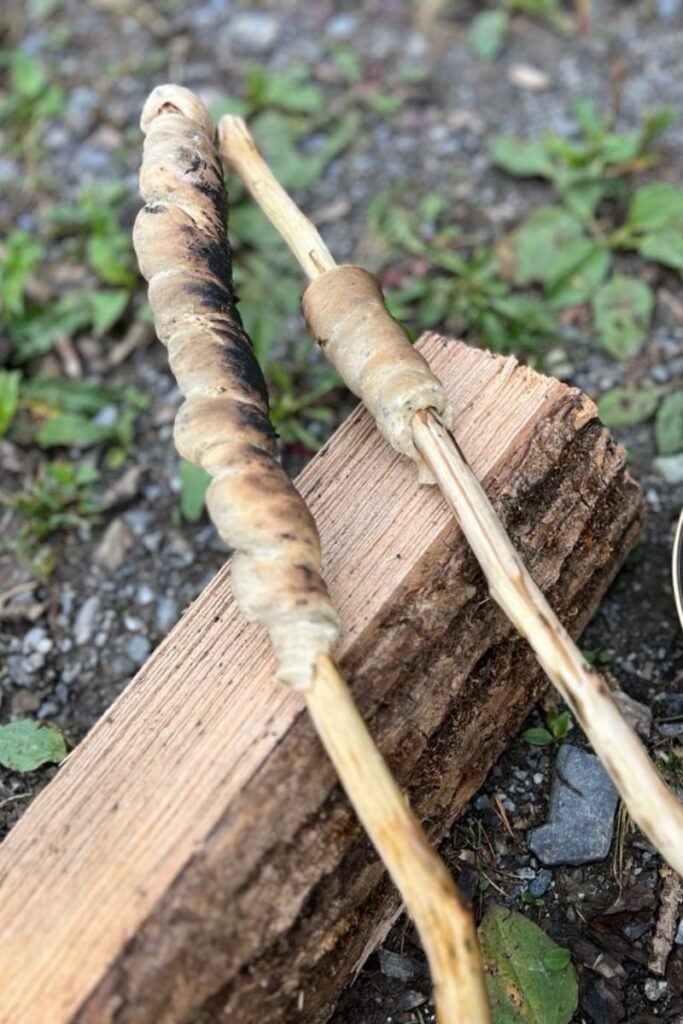
On the menu was a light pasta with cheese and herbs and “snake bread.” Snake bread is a version of a simple bread dough called bannock. We tended to the fire, found some sticks and wrapped our homemade dough around the sticks. Then quickly roasted it over the coals of the fire.
It’s such a fun and rustic way to have fresh bread on the trail! I pulled out my camp stove, cooked up our pasta then added the parmesan cheese, fresh foraged herbs and a few nuts and seeds for a crunchy garnish. This pasta dish may not sound fancy. It was so flavorful and delicate from the herbs we picked. Cooking it together at a beautiful spot was an experience I won’t forget.
Surprising Vineyards

I was surprised to see so many vineyards around the towns and hillsides. Some people were just growing a few rows of grapes in their backyard just like having a small garden! They are mainly growing white varietals like chardonnay, riesling and sylvaner. While there are an upward of 100 of different vineyards, there are only a couple wineries producing wine. So the neighbors share or sell their harvest to the local wineries for production.
I met up with a husband and wife team of Annette and Arnold Hoop at Weinbau Hoop. They tasted me through their current selection. They were so passionate about their local grapes and the flavor of their barrel aged chardonnay. It was a crisp riesling and a new variety to me, Müller Thrugau bottles were clean and refreshing.
Rhein River Valley to the Ridge Lines
After exploring the lowland Rhein river valley it was time to get up into the mountains. On a gorgeous sunny morning, I met up with Andreas (Andy) Batliner. We went for one of the best day hikes of my life. It started in Malbun on a chair lift (always a great way to start a hike…ha) and ran along the ridgeline that bordered Austria and Liechtenstein. Along the way we were greeted by grazing cows. There was a consistent bong of their cowbells echoing through the valley and local wildflowers dotting our footsteps.
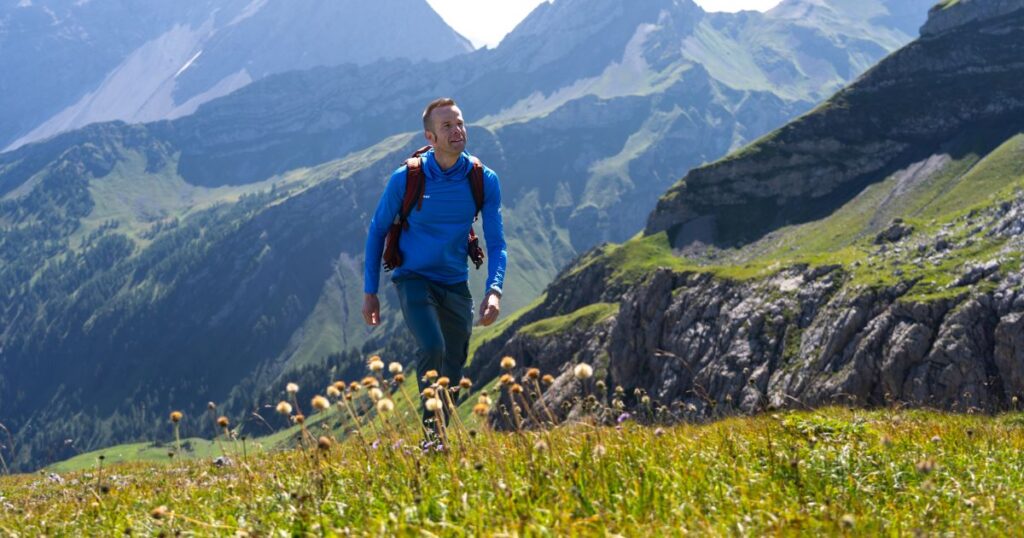
Andy had promised me an epic lunch on the mountain top and he sure delivered. Something that’s different about hiking in European countries is the mountain huts or refugios. Think of these like a rustic bed and breakfast in the mountains. Hikers can stop and refuel or stay the night in communal bunks. The food is elevated beyond just candy bars and bags of chips and it’s truly a warm expression of hospitality. And wow, the Pfalzerhutte we stopped at was an absolute mountain masterpiece.
There were loaves of fresh baked bread, local sausage and sauerkraut, an Indian curry dish with lemon and yogurt. All at 6900 feet/2100 meters!! We were even greeted with a cold beer!
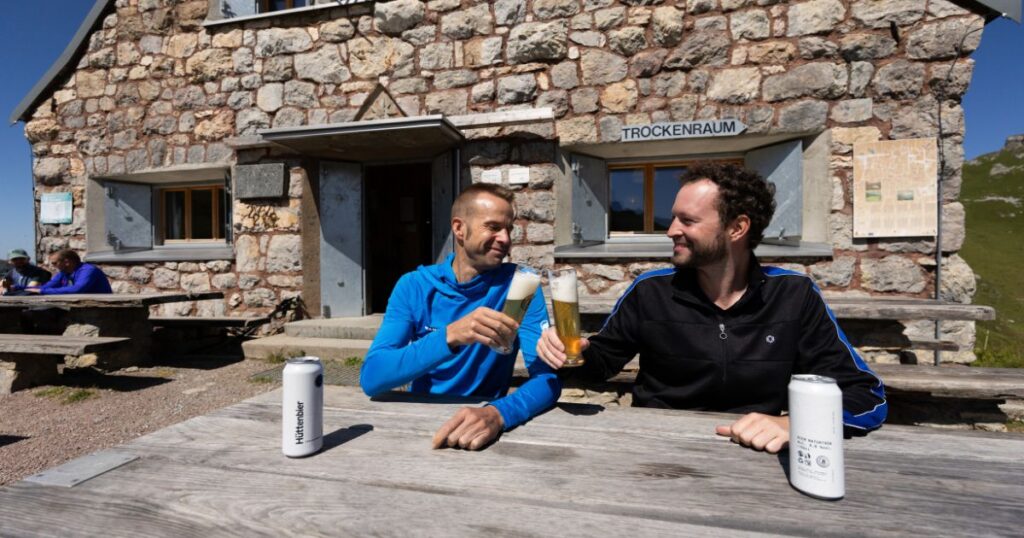
Truly one of the best summit beers I’ve ever had! What an incredible way to end a hike.
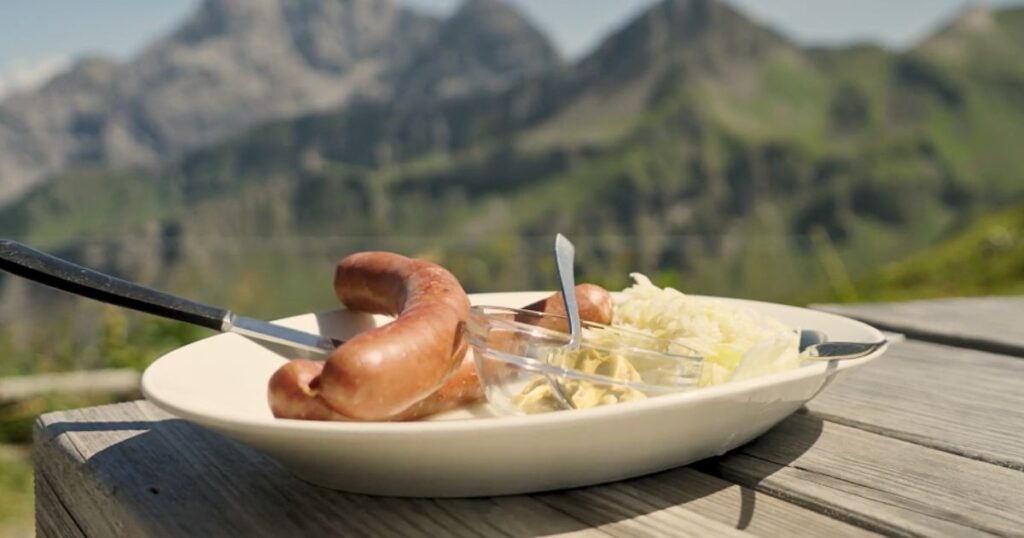
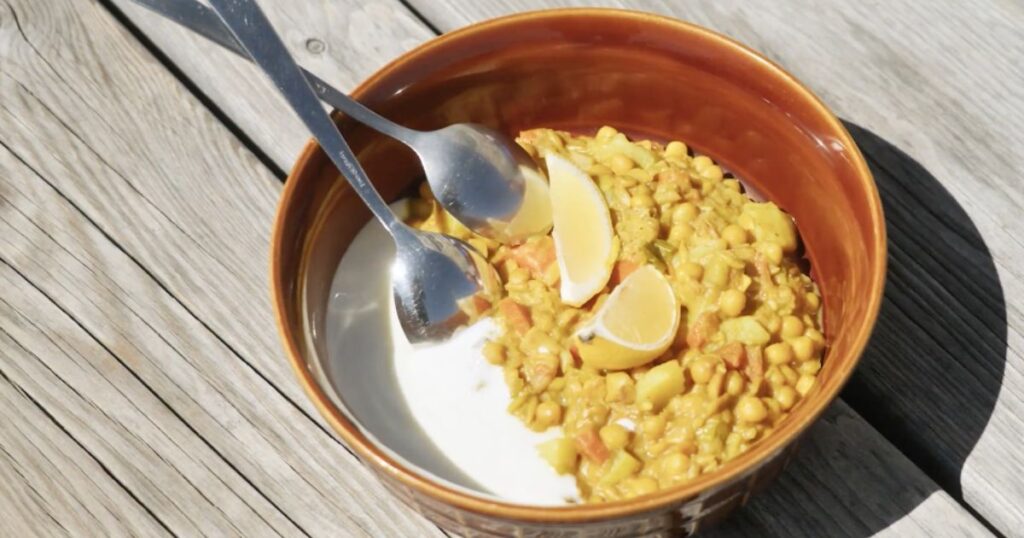
Fürstensteig Hike
The last thing I wanted to do in Liechtenstein was the Fürstensteig hike. I was told by my guides that this was an approachable trail not to be missed. We started in Vaduz and drove up a windy road for about 20 minutes to the trailhead. After about 30 min of hiking on a narrow trail through chunky exposed rock, hugging the rock faces we got this view. We were lucky enough to get above the cloud layer that was forming for a view down into Vaduz, across the Rhein and over into Switzerland that was truly special. And so accessible from the town.
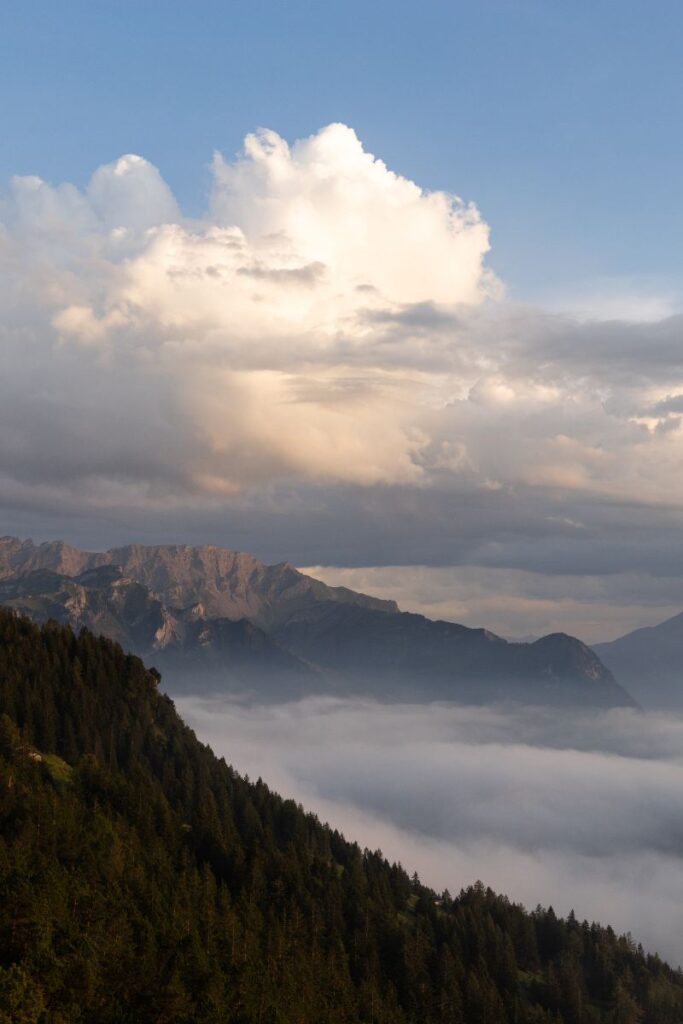
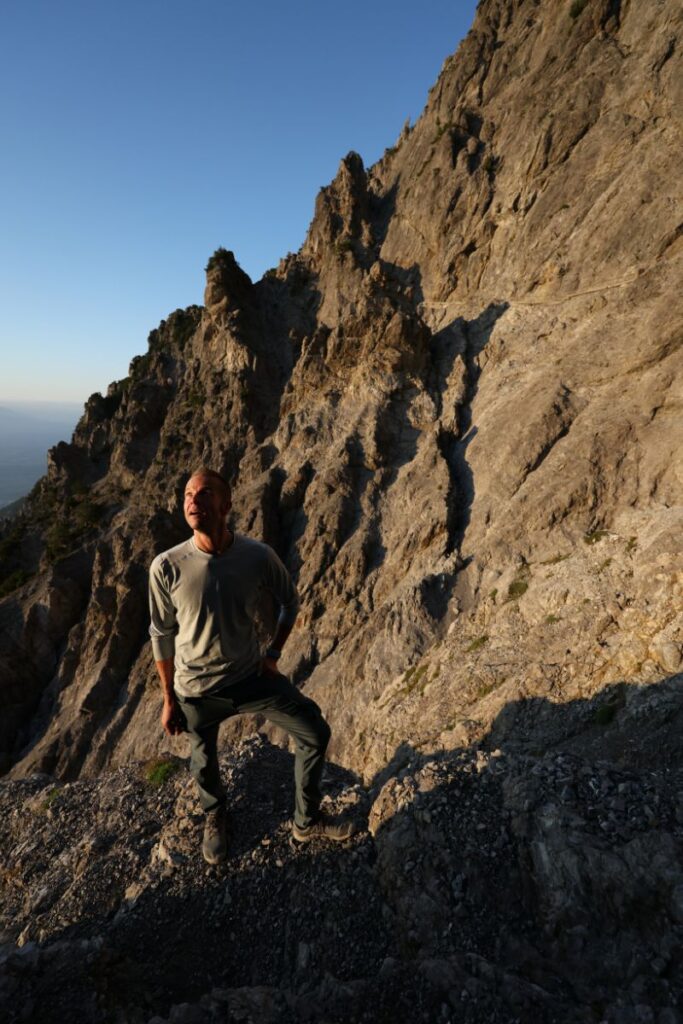
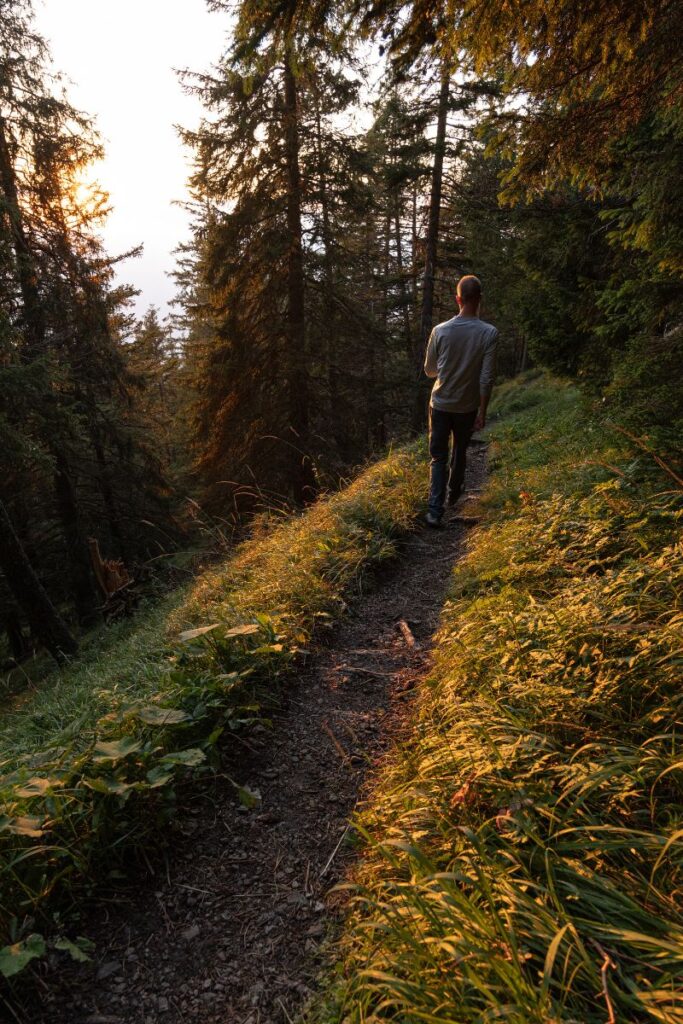
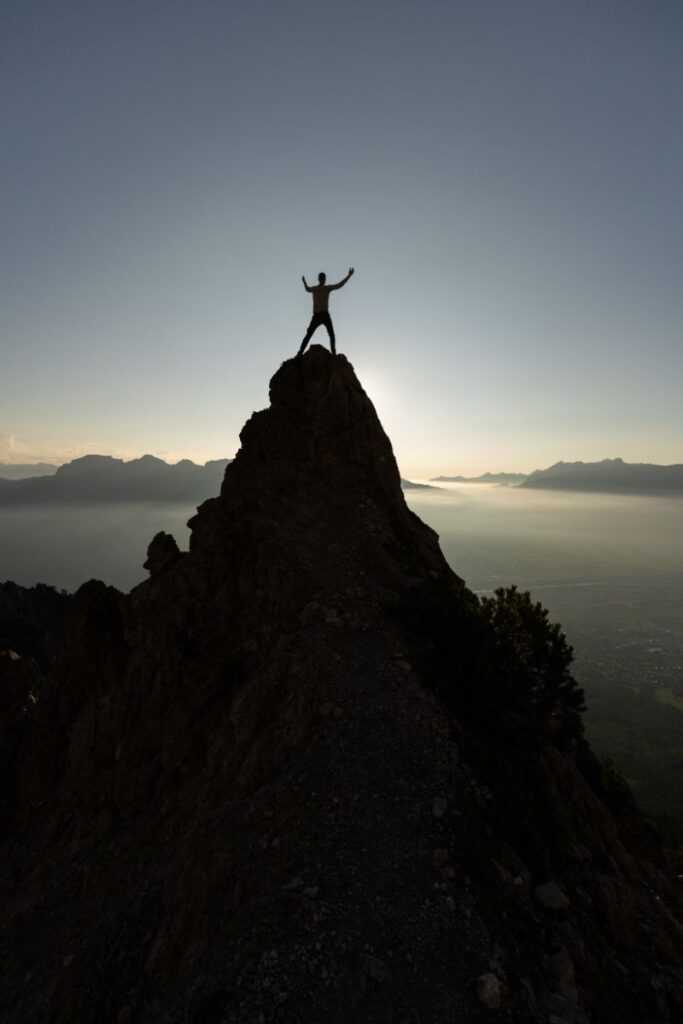
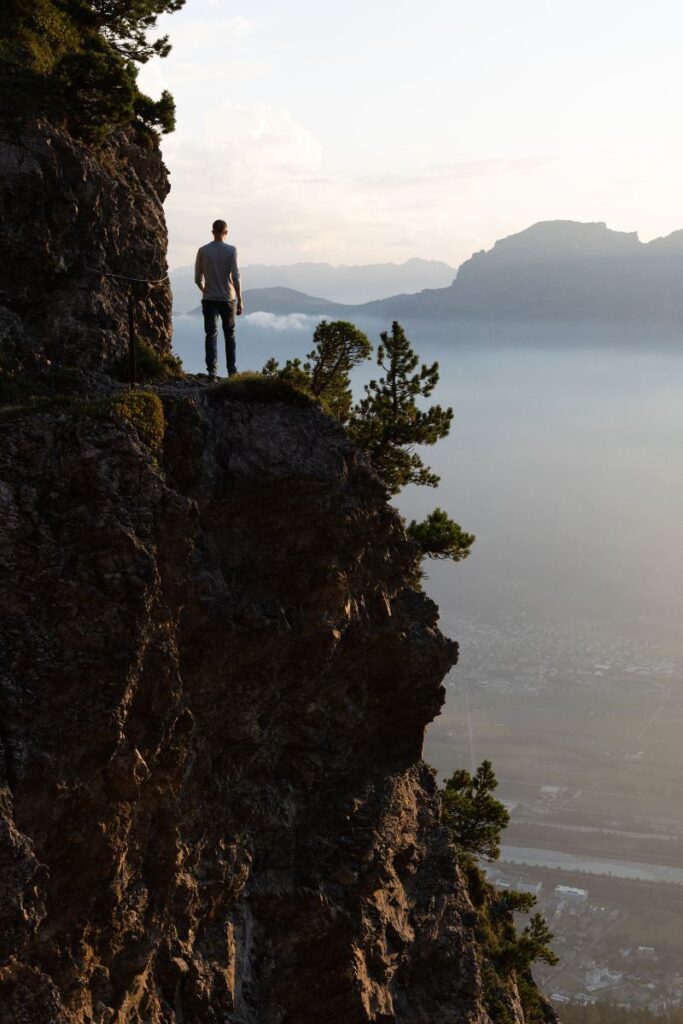
The few days I had in Liechtenstein were enlightening to a country and area that is often forgotten next to its more popular brothers and has its own natural beauty and tasty flavors worth exploring.
Gstaad and Legend Mike von Grünigen
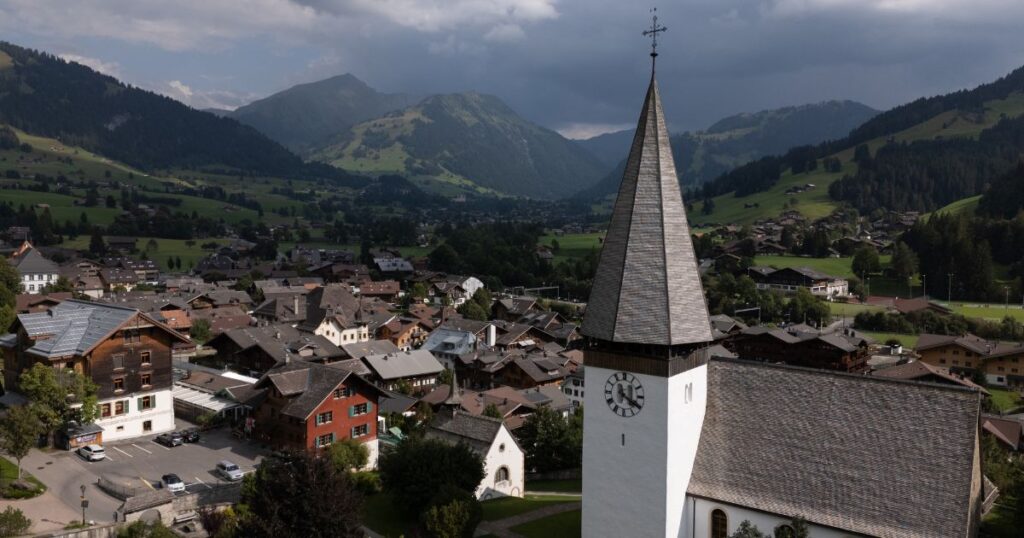
Just a half day drive away West from Vaduz into Switzerland, I was greeted by local ski legend Mike von Grünigen in his hometown of Gstaad on the western side of Switzerland. He’s a former Olympic medalist and world cup ski champion and he was my guide for the next few days to share what makes this part of the world AND this part of Switzerland special.
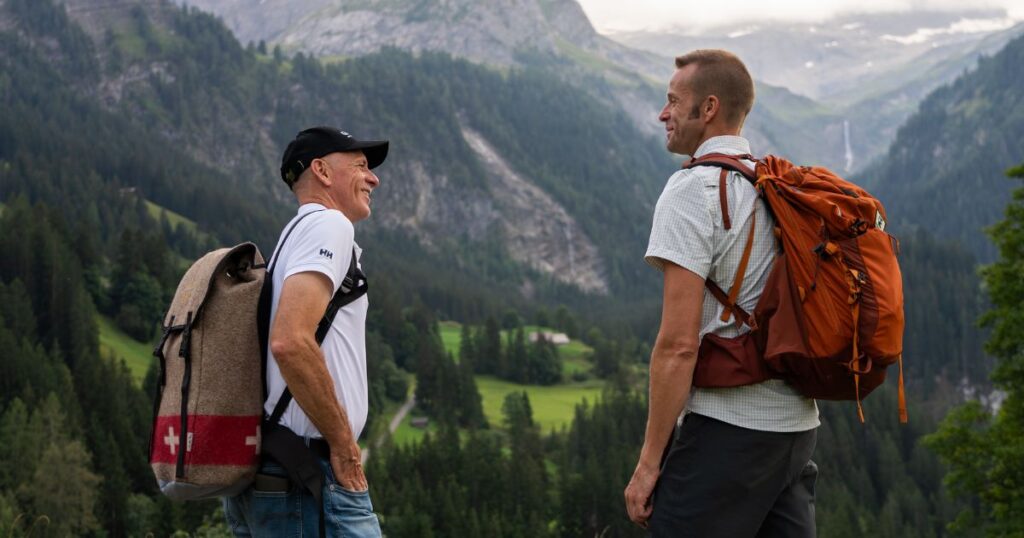
We toured around the charming center of town, which sits at the bottom of the Lauenen valley. One of the many beautiful green valleys of this region.
Traditional Swiss Cheese Making
Switzerland is known worldwide for a lot of things. Chocolate, watches and of course CHEESE. And my first day in Gstaad was all about the cheese. We woke up early and drove up the hillside to meet with Willi Bach and his wife for a traditional Swiss cheese making experience.
They tend to their herd of 20 cows and make cheese in very small batches. They get enough milk during milking to fill one cauldron which will eventually make 2 wheels of cheese. That’s it. Just 2 wheels of beautiful cheese a day. They really take their time with the batch, heating the milk to the right temperature over a wood fire and monitoring the curds to know when it’s just right to pull off the heat.
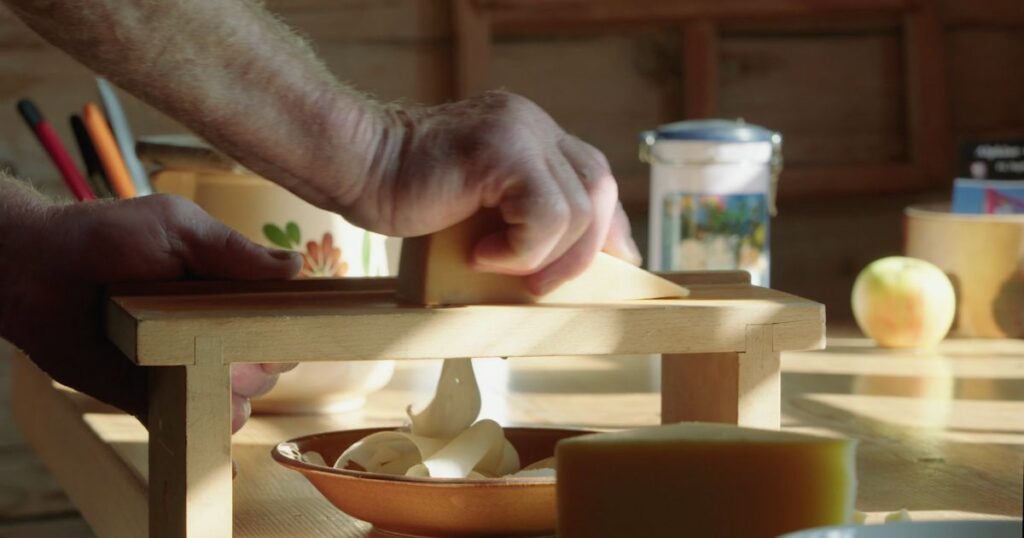
While the cauldron was warming, Willi shared some of his cheese with me over his breakfast table. To call this “Swiss cheese” is technically correct as it is produced in Switzerland, but what we know of as Swiss cheese is a watered down, less flavorful, pale white version of the real thing.
Willi’s cheese was an absolute wonder. I have never tasted cheese this good and this complex! The cheese tasted of the grass that the cows grazed on, a light sweetness from the quality milk and finishing with the flavor of strawberries and flowers.
They age their cheese on site in the basement for anywhere from 3 months to 2 years and the flavor grows and develops over that time into very different cheeses. What a great way to start my day and my time in Switzerland!
Cheese Grotto
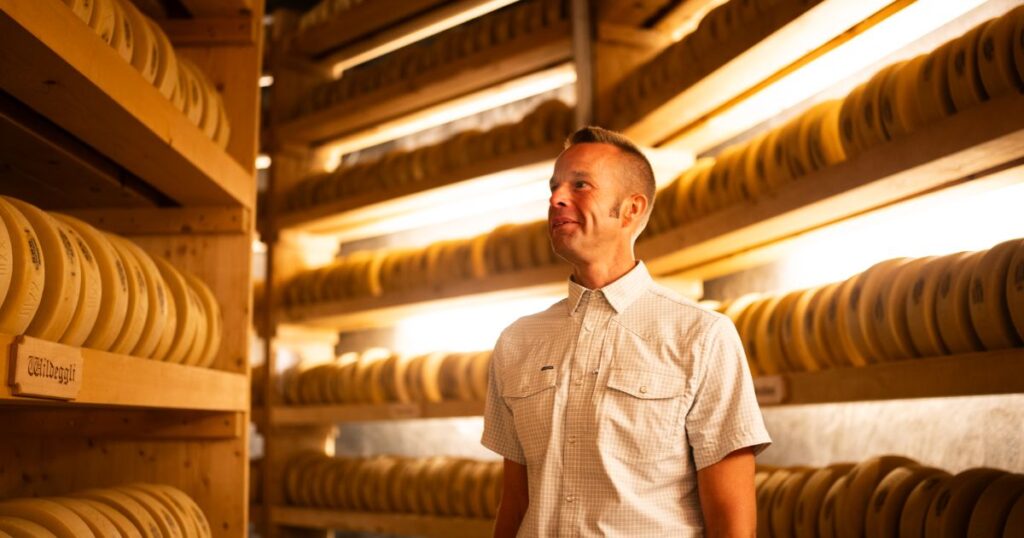
There are many cheese makers around the valleys but many do not have the space to store them. So a local co-op was created to help. I met up at the Cheese Grotto which was amazing as it sounds to see many wheels of cheese from all over the region being stored, aged and prepared for sale.
Stepping into the grotto was an other-worldly experience with an intoxicating aroma of aging cheese and a welcoming hue of candle light. I was able to taste some different ages of cheeses that were delicious and soaked in the feeling of being surrounded by 6 levels and over 1000 wheels of local cheese.
The owner mentioned that my clothes would also soak in the smell of the cheese for the rest of day which I definitely wasn’t mad about!
Mike had more cheese in store for me before our day was done.
Fondue
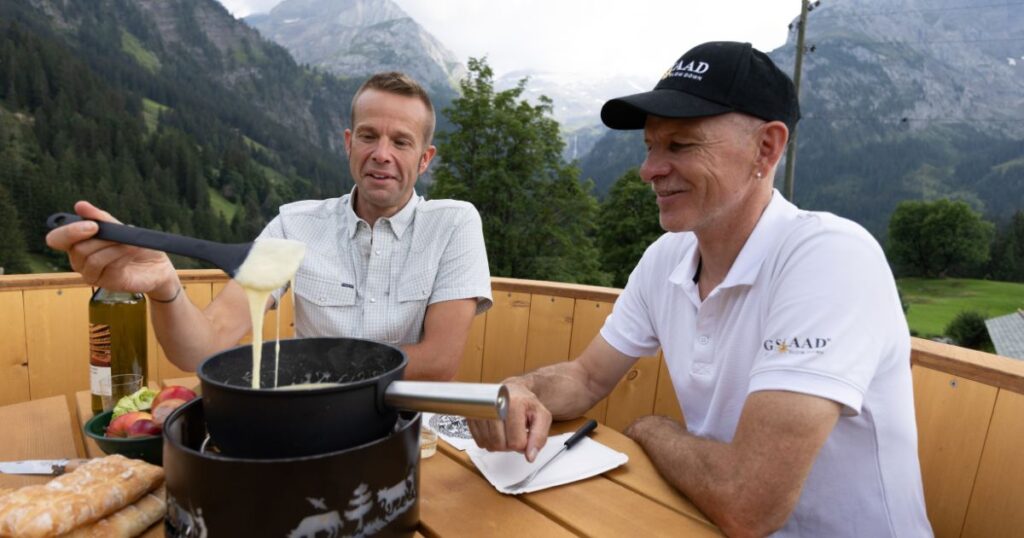
What do people want to do when they visit Switzerland? They want to eat fondue in the mountains! The town of Gstaad did a really fun and smart thing. They are giving people what they want.
They created a city project to build 7 large scale fondue pots dotted around the area. All of the pots have incredible views of the mountains and valleys. Think of these as large picnic table booths that can sit up to 8 people. They are free for the public to use and a great way to share the region with tourists.
To make this even better, some of the cheese shops in town will sell you a fondue backpack! Yes! A fondue backpack! which consists of a burner, pot, bread, cheese, forks and even a bottle of wine for the full experience!
They really thought of everything. I love that these fondue pots (both big and small) are available for all to enjoy. Mike and I chatted away the afternoon. Dunking and dipping our bread in the delicious melty cheese with the gorgeous Tungelschuss waterfall behind us.
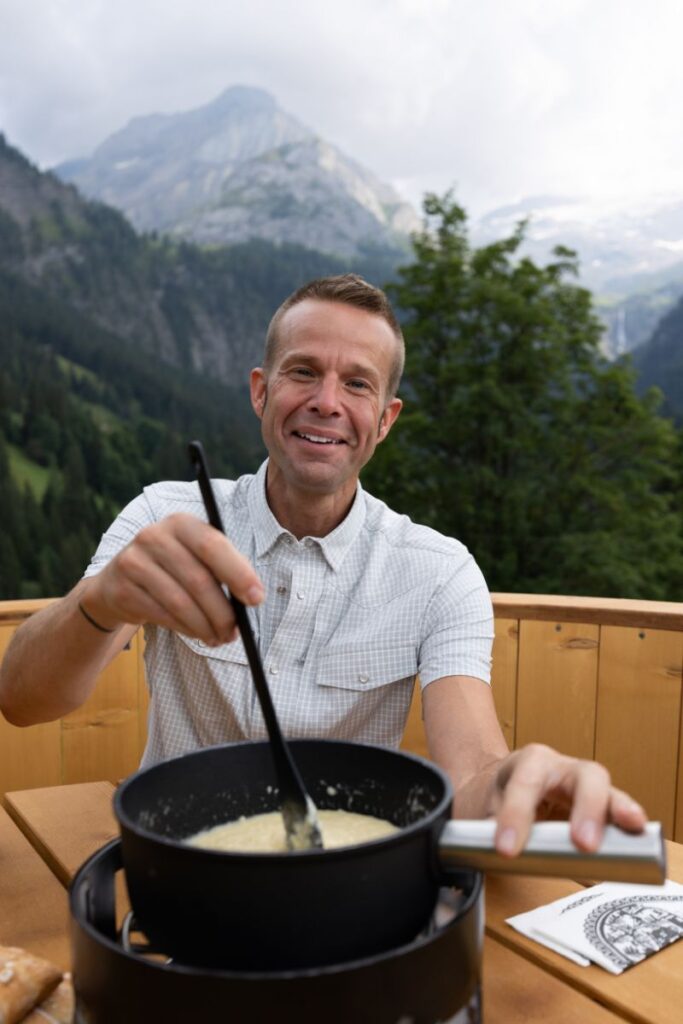
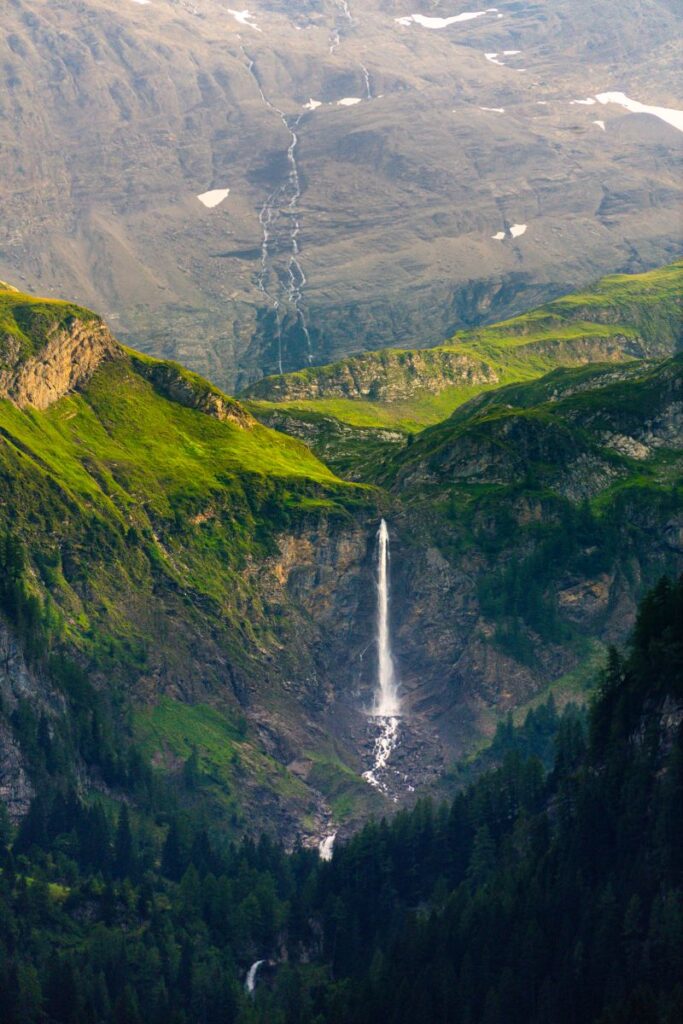
Glacier 3000 Gondola Ride
No trip to the alps would be complete without a trip up into the mountains. I jumped on the Glacier 3000 gondola on a clear, bluebird day. The gondola was traveling up to 3000 m and above in just a matter of minutes.
The views up at the top were AMAZING. I could see all of the valleys that I have been exploring. There were multiple towns and even the famous Matterhorn in the distance.
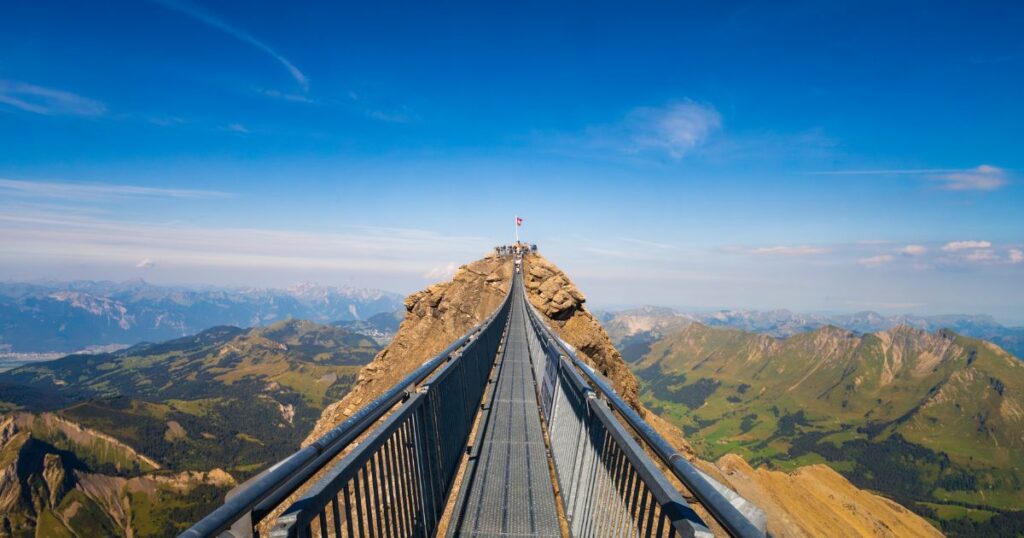
Cooking with a Michelin Star Chef
At this point of my journey, I had already met many great locals and guides to share in the outdoor eating experience. I met up with a very special local chef. His name was Martin Göschel and he happens to be a Michalen star chef.
Martin is usually tending the multiple kitchens at the 4-star Alpina hotel in the valley. On this day, I was able to get him out of the kitchen and his chef whites to cook up a backyard BBQ.
Martin cooked a Swiss style BBQ at a chalet that he uses for rustic private events. And wow, what an incredible set up with weathered wood as our table, a stone firepit and alpine water streaming in for us to use for our dishes. He created a menu of local proteins, herbs and ingredients, some of which I have never tasted before.
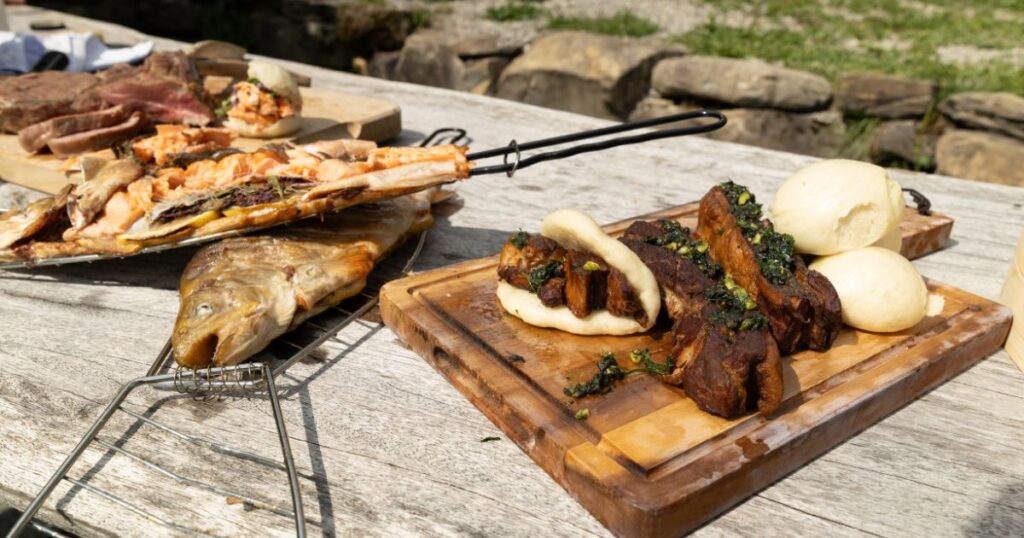
On the menu
Grilled local trout with lemon and foraged herbs.
Braised pork belly, served in seamed buns with herb and honey pesto.
Veal chop stuffed with raclette cheese, cooked in a dutch oven pot with hay.
All were outstanding dishes by themselves but putting them all together was a combination of local flavors that really connected me to the area. And I am so glad we were able to cook and share together. It’s what it’s all about.
Zuglete Cow Festival
Besides cheese, Gstaad is known for another thing: The Zuglete cow festival.
Yes, a COW FESTIVAL. I had heard about this prior to my trip but I wasn’t quite sure what it was. I met up with a local farmer Lisi Allen and her family to help prepare bouquets for their herd. Every year, the whole family gathers and prepares the cows to travel from the mountains into the town as a celebration for a good season. They celebrate the cows that give them delicious milk.
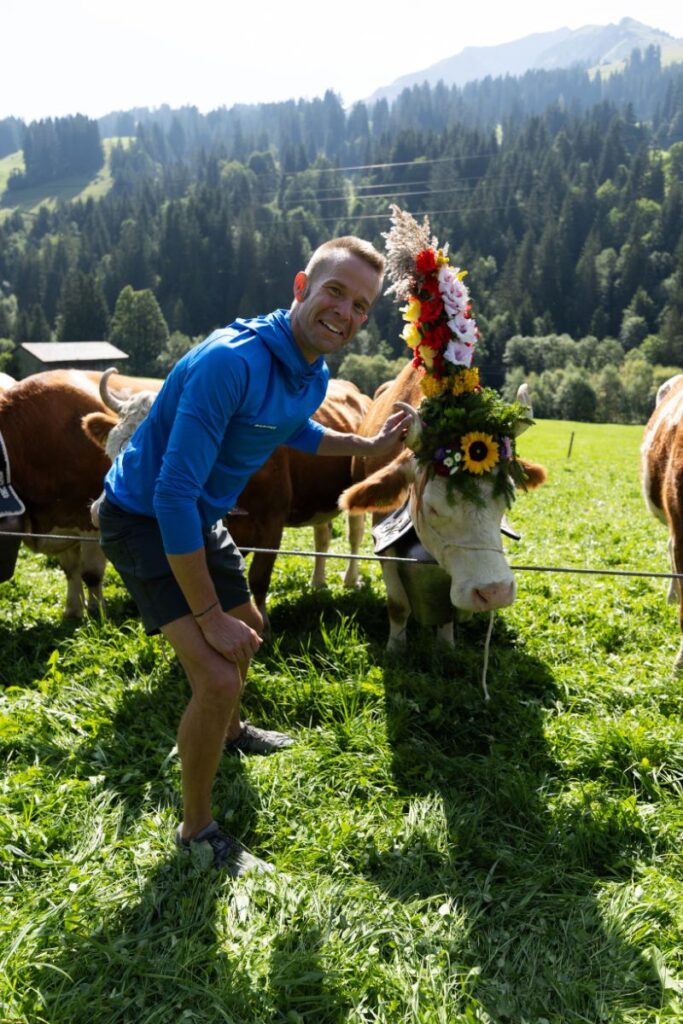
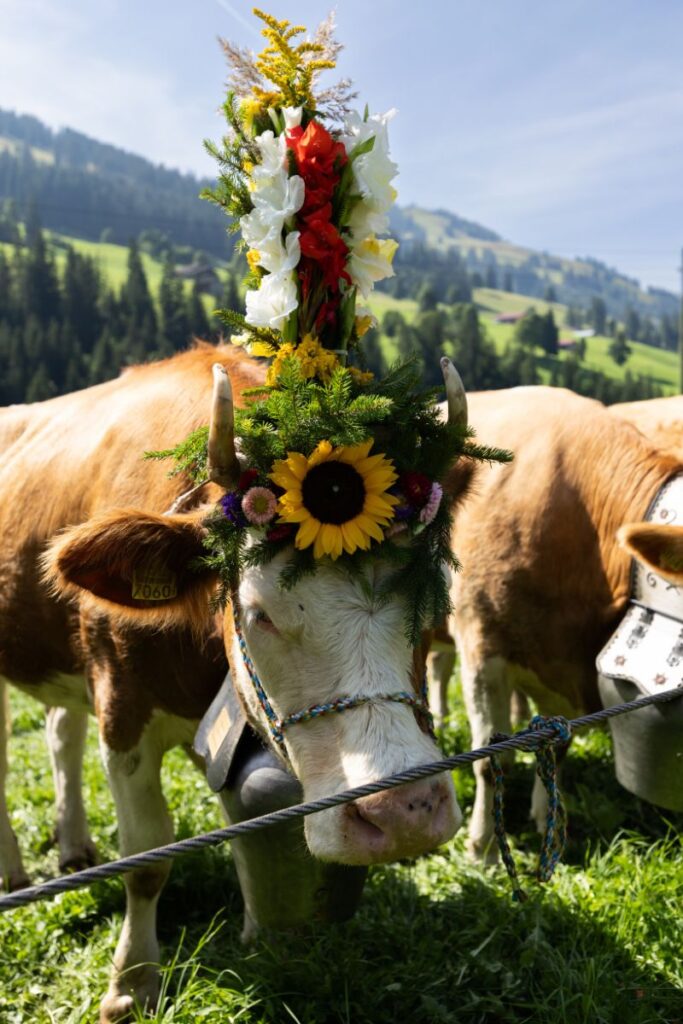
Besides the bouquets, each cow has its own massive cowbell (the size of a large beach ball) and other local ornamentation. They parade them into town for all to see combined with festive dress, music, Swiss festival food for all to enjoy. It was a fantastic celebration that I highly recommend viewing some day.
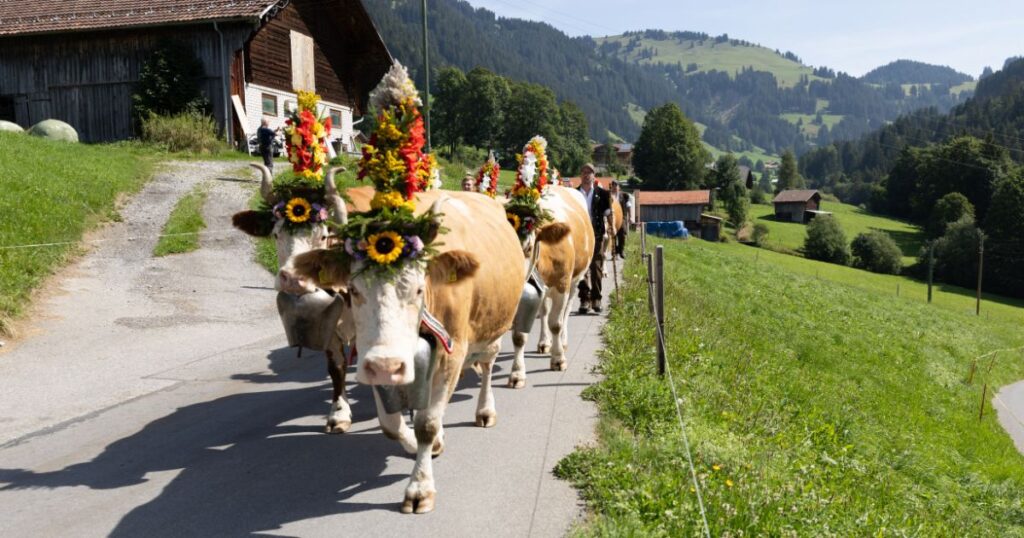
This trip to Liechtenstein and Switzerland was truly a celebration of what Outdoor Eats is all about. Meeting new friends, hearing their stories and connecting over a meal in a beautiful setting. All of my guides were gracious enough to share their literal backyards with me.
I made lunch in an old castle, had fresh baked bread and a summit beer at a mountain hut, cooked with a Michelin star chef, made fresh Swiss cheese with a seasoned farmer and ate fondue with an Olympic medalist. Any one of these experiences would have been enough, but when you combine them all it really shares that food and the outdoors has a way of connecting us even when we don’t speak the same language.
And these memories will last a lifetime.
Read more trip journals here.



